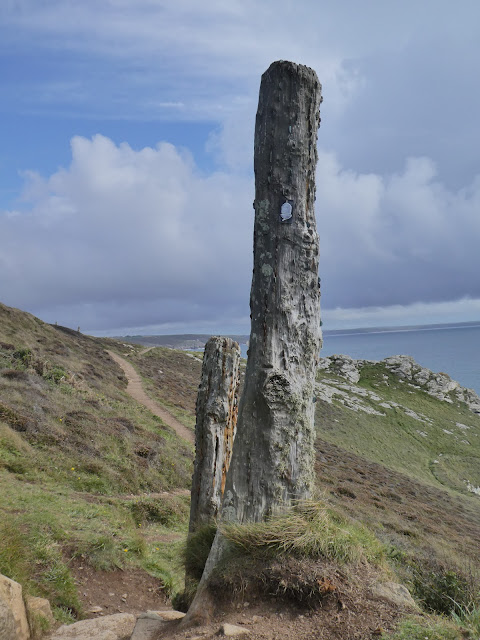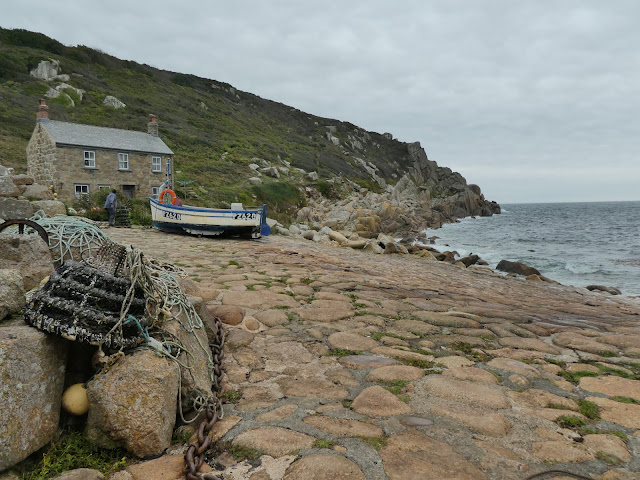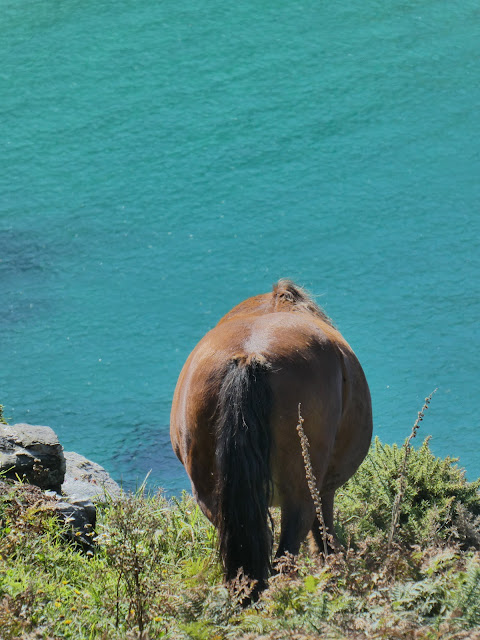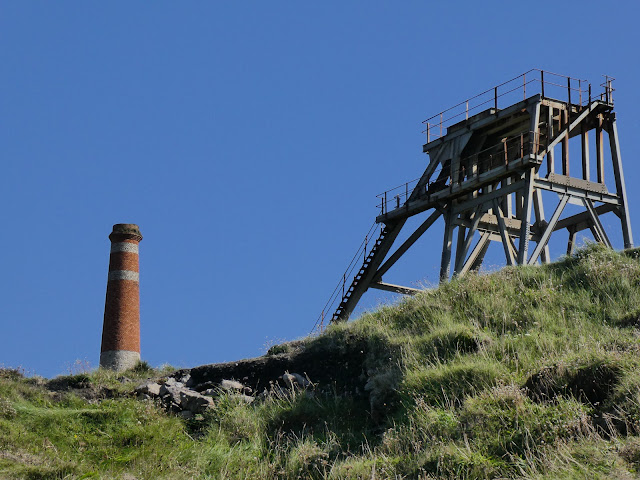First, we returned the next day after the storm to complete the section with the sand bar. It is called Loe Bar. The Atlantic Ocean on one side and a large freshwater lake on the other.
Then, it was my birthday which involved two cafes and a bit of shopping. I bought a dress. And there was chocolate cake, of course!
Not a milestone - an observation. All along the path we have seen many signs warning of dangerous cliffs and unstable cliffs, numerous small diversions where the track has been re-routed slightly inland due to crumbling cliffs. This was a large diversion around the top of a paddock moving the track over 100m inland.
Sometimes other tracks are permanently closed.
Guess what these workmen are doing hanging over the edge of a cliff?They are attempting to stabilize it so the green house does not fall into the sea. It must be costing the ownersca fortune. I have a feeling that in the end, the sea will win. It is inexorably eroding this coastline.
Sheryl chatting with some other walkers. We have many conversations along the path with people and with their dogs too.
Impressive cliffs.
Kynance Cove - wild, attractive and popular. There is a carpark up above and a great cafe down at sea level. We had coffee and cake.
The cliff workers, impressive cliffs and Kynance Cove were all on the way to another milestone - Lizard Point - the southern-most point of mainland England. There is a lighthouse with foghorns, a lifeboat station used for rescuing people at sea, and two cafes, and village nearby.
The next day, Saturday 28th September - we reached the halfway point of the South West Coast Path in a tiny village called Porthallow, just after eating some excellent apple crumble in the Fat Apple Cafe. We deserved the crumble as we had walked 507kms!
We have also left the Atlantic Ocean behind and will now be walking beside the English Channel for the rest of the walk.
The stats as of day 40 of the Path (including 4 rest days)
521.1kms walked
18,784ms of ascent (more than twice Mt Everest)
4941 photos taken (plus 446 photos in Scotland)
England's western-most point - Lands End
England's southern-most point - Lizard Point
1 blister
1 sick day
1 birthday
Numbers of dogs patted, people chatted, wild blackberries eaten, smiles - countless!
Here is a picture of some apples.












































































